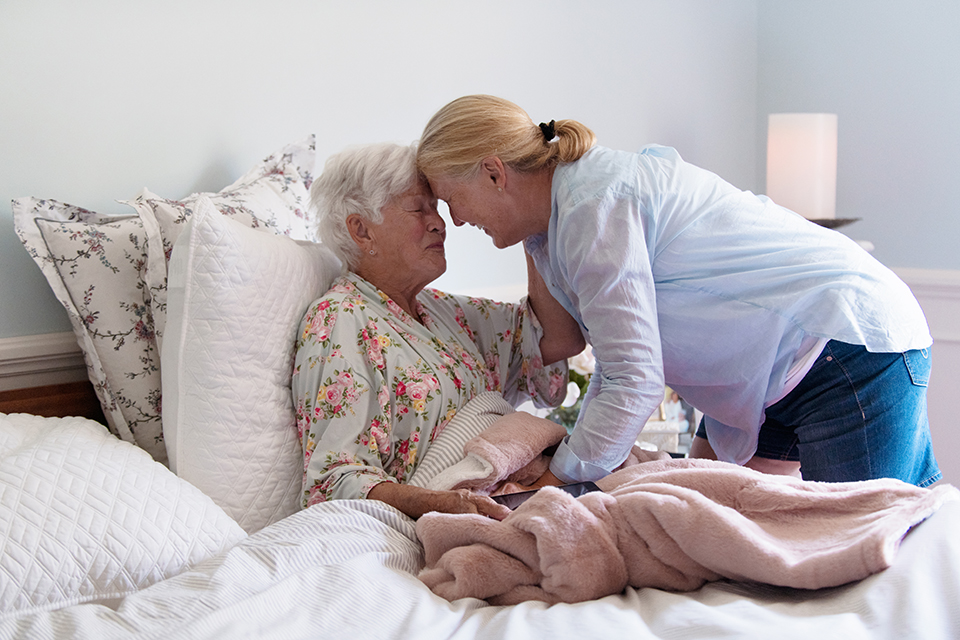New York Hospice Care: How to pay for Hospice Care, Licensing and Regulations, and Questions to ask
Anyone interested in being in the hub of culture and life comes to New York to experience the richness of the city. There are benefits for seniors in New York, which may add to the appeal. Social security, Medicare, Supplemental Security Income, and the Senior rent increase exemption are all added benefits of being an aging adult in New York. New York’s population is over 8 million, abut 15% of which are seniors and retirees. It is understood that as seniors and retirees continue to age, some may require care at some point. Unseen illnesses may interrupt life or ongoing symptoms can cause an abrupt change in diagnosis. New York hospice care is a concept of care, not a specific place of care. It is for those who have been living with a terminal illness or only recently received a serious diagnosis of six months or less life expectancy. This specific type of care is there to ease the burden of 24-hour care. It provides a respectful, comfortable care setting for your loved one’s final months and weeks or days. It is an option to consider and can be especially helpful for families, or those seniors without family to provide end-of-life care.
Signs it may be time to look into hospice care
- Your loved one has made multiple trips to the emergency room.
- The condition continues to progress, affecting quality of life.
- The individual has been admitted to the hospital several times in the last year with the same or worsening symptoms.
- Does loved one wish to remain at home, rather than spend more time in the hospital.
- Your loved one has decided to stop receiving treatment.

What is Palliative care and respite care and how are they different from hospice?
Let’s discuss what makes them different:
Palliative Care
Palliative care refers to any care that alleviates symptoms, whether there is hope of a cure by other means or not. Both palliative care and hospice care are intended to provide comfort for the individual and family. This care focuses on easing pain and discomfort to help people have the highest possible quality of life. It is appropriate at any stage of life, not just end of life.
Respite care
Taking care of a loved one who is terminally ill can be exhausting and emotionally draining for family members, and especially if family members are the caregivers. Respite care provides relief for those looking after the terminally ill individual. They may be checked into temporary hospice and provide a much needed break for family caregivers.
Hospice
Hospice care is an option for people who have a life expectancy of six months or less. In place of ongoing curative measures, hospice involves palliative care (pain and symptom relief), enabling the individual to live their final days with purpose, grace, dignity, and support from family and staff. The purpose is for the individual to spend their final days in a comfortable, familiar environment, with their loved ones enabling them to focus their attention with help of staff. Some hospitals, nursing homes, and other health care facilities offer hospice care on-site – however, it is most often provided in the person’s home.


Laws and Regulations for hospice care in New York
In New York State, hospice rules are set to ensure safety and health for people diagnosed with a life expectancy of six months or less. All operating hospices are regulated under Article 40 of the Public Health Law. Hospice care in New York are licensed by the New York Department of Health, Licensing Board.
Medicare’s benefit regulations incorporate the following ideals:
- Must be licensed in the state they operate.
- The person receiving care and their family know of their terminal condition.
- Additional medical treatment and intervention only on a supportive basis.
- Pain control should be available to the person as needed.
- Trained volunteers should provide additional support as required.
State regulations
Regulations address requirements for hospices contracting with state Medicaid programs and the rules pertaining to patients. Visit https://www.hospicealliance.org/ to see each states codes and how they apply to care regulations.

How to pay for Hospice Care?
Medicare, private health insurance, and Medicaid (in 43 states) covers hospice care for patients who meet eligibility criteria.
Private insurance and veterans’ benefits may also cover hospice care under certain conditions. In addition, some hospice programs offer healthcare services on a sliding fee scale basis for patients with limited income and resources. To get help with your Medicare questions call 1-800-MEDICARE (1-800-633-4227) or visit www.medicare.gov. Additional information about how to pay for hospice care can be found at the Public Policy Institute of the AARP.
Who Pays for Palliative Care?
Medicare, Medicaid, many insurers, and healthcare plans will cover the medical portions—physician and nurse services—of palliative care.
Veterans may be eligible for palliative care through the Department of Veterans Affairs. Check with your doctor and healthcare plan to see what insurance will cover in your particular situation. Unlike the comprehensive hospice benefit, there is no comprehensive palliative care benefit.
Questions about Hospice Care
Is Hospice only for those who have cancer?
No. It is for anyone with a terminal illness who has been given a prognosis by their doctor of six months or less.
Do only elderly people use these services.
It is for all age groups during the final stages of their life. The intention is to allow people to enjoy the closeness of family and a comfortable environment in the last stages of their life.
Do people on hospice die immediately?
This care does not hasten death. Though, studies have shown people often live longer than those with the same or similar illnesses who do not choose hospice.
Are all hospices the same?
The United States offers thousands of hospices. Most engage in Medicare, which requires certain services for the person in care. So, there is a standard operating procedure.
How can I afford Hospice care? Is it expensive.
Hospice care is covered by Medicare Part A, and your personal insurance.
Is Hospice is only provided in the individual’s home?
NO, Care is provided wherever the person is, which could be a long-term care facility or a hospital. Being take care of at home is always an option.
Additional inquiries regarding hospice care
The idea of hospice can be scary, leaving everyone involved with questions and concerns, all while dealing with heavy emotions. Remember to always ask whatever questions arise. Hospice is there to provide the best possible care during sensitive times for the individual and their family.
- How soon will care begin?
- How many times a week will a nurse visit?
- Will the regular doctor visit or coordinate care at home?
- What is the response time for nurses and caregivers if called upon?
- If there is an emergency or if an overwhelming situation occurs in the middle of the night, is there a nurse available to speak with on the phone or come to the home?
- Can family members administer any medication or pain relief?
Hospice Care resources and links
Medicare.gov is the resource for all things related to Medicare. The official website where you can learn abut eligibility and signing up and any questions you may have regarding coverage.
Medicaid.gov is the most relevant resource for any questions or concerns regarding all things Medicaid.
New York State Resources (Hospice and palliative care) provides residents of New York with information and additional resources regarding end of life care.
New York Department of Health has resources for New Yorkers in need. Providing services that may help, including help with food, healthcare assistance.
Search other areas for Hospice Care
Not finding what you’re looking for? Take a look below.
